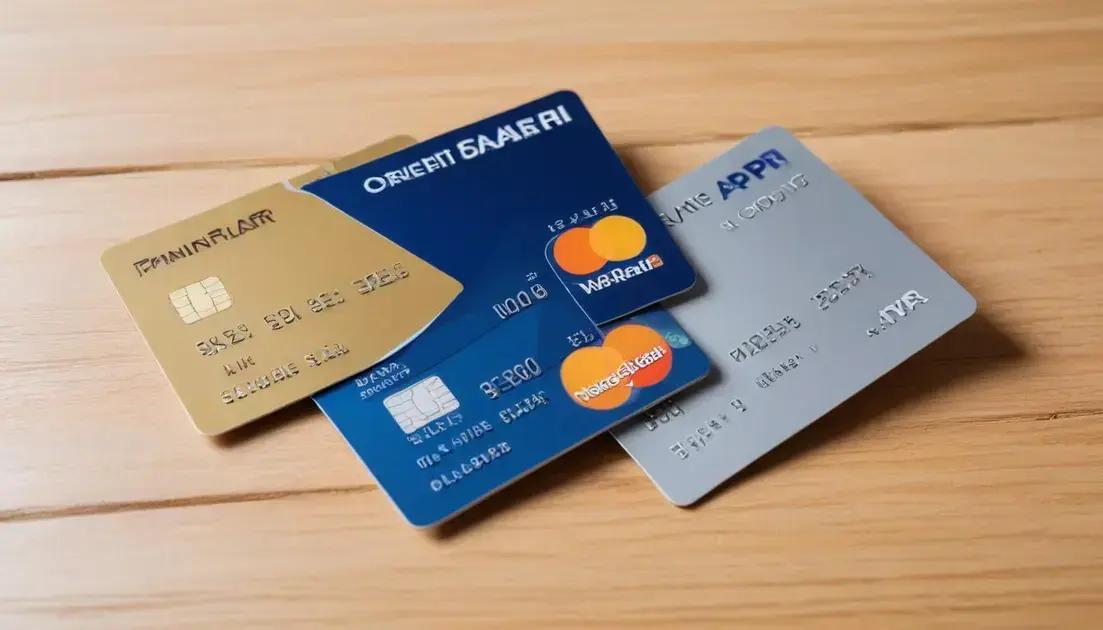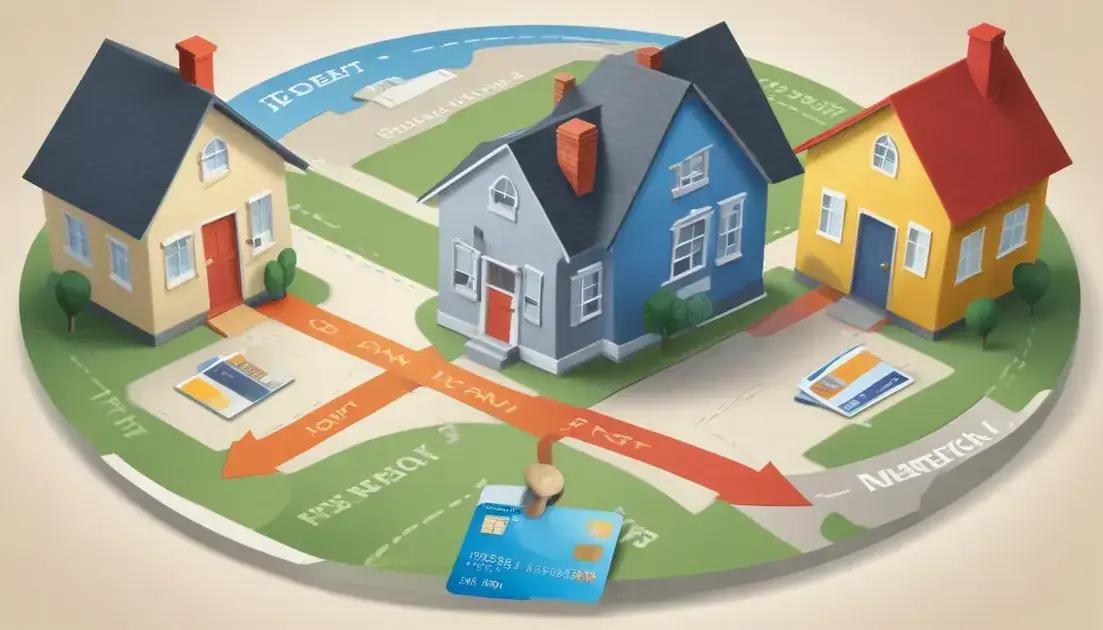Zero percent credit cards: how to use them wisely and save big

Ever wondered how zero percent credit cards can be a game-changer for your finances? These cards offer a golden opportunity to save on interest and pay down debt faster—if you know how to use them right. Let’s dive into the details.
What are zero percent credit cards?
Zero percent credit cards are a type of credit card that offers a 0% introductory APR (Annual Percentage Rate) for a set period, usually between 12 to 21 months. This means you won’t be charged interest on purchases or balance transfers during this time, making them a powerful tool for managing debt or financing large purchases.
How They Work
When you open a zero percent credit card, the issuer gives you a temporary interest-free window. If you carry a balance past the promotional period, the standard APR kicks in—often much higher. To maximize benefits, aim to pay off the balance before the intro period ends.
Common Uses
These cards are ideal for debt consolidation, allowing you to transfer high-interest balances and save on interest. They’re also useful for big purchases, like home renovations or medical expenses, letting you spread payments without added costs—if paid on time.
However, missing a payment or exceeding the credit limit could void the 0% offer. Always read the fine print to avoid surprises.
How do zero percent credit cards work?
Zero percent credit cards work by offering an introductory period where no interest is charged on balances. This promotional period typically lasts 12-21 months, giving cardholders time to pay down debt or finance purchases without accruing interest.
The Interest-Free Window
During the 0% APR period, your balance won’t grow from interest charges. However, minimum payments are still required each month. Missing a payment could cancel your promotional rate.
What Happens After the Intro Period?
Once the promotional period ends, the card’s standard APR (often 15-25%) applies to any remaining balance. Some cards even charge deferred interest, meaning you’d owe all the accrued interest if not paid in full by the deadline.
These cards often come with balance transfer fees (3-5% of the transferred amount). Always calculate whether the interest savings outweigh these fees before transferring balances.
Benefits of using zero percent credit cards
Zero percent credit cards offer several financial advantages when used strategically. The most obvious benefit is the interest-free borrowing period, which can save you hundreds or even thousands in interest charges compared to standard credit cards.
Debt Consolidation Power
These cards are excellent for consolidating high-interest debt. By transferring balances to a 0% APR card, you can focus on paying down the principal without interest eating into your payments. This could help you become debt-free years faster.
Major Purchase Financing
Need to make a large purchase? A zero percent card lets you spread payments over several months without interest. Just be sure to calculate your monthly payments to pay it off before the promotional period ends.
Credit Score Benefits
When used responsibly (keeping balances below 30% of your limit), these cards can actually improve your credit score by increasing your available credit and showing consistent on-time payments.
Some cards even offer rewards like cash back or travel points during the intro period, giving you extra value beyond the interest savings.
How to qualify for a zero percent credit card
Qualifying for a zero percent credit card requires meeting certain credit and financial criteria. Most issuers look for applicants with good to excellent credit scores (typically 670 or higher), though some cards may accept fair credit.
Credit Score Requirements
Your FICO score is the biggest factor. Scores above 720 get the best offers, while those between 670-719 may qualify for shorter intro periods or lower credit limits. Check your score before applying to avoid unnecessary hard inquiries.
Income and Debt Considerations
Card issuers evaluate your debt-to-income ratio to ensure you can handle new credit. They prefer applicants with:
- Stable income history
- Low credit utilization (below 30%)
- No recent delinquencies or bankruptcies
Application Tips
To improve approval chances:
- Pay down existing balances before applying
- Avoid multiple credit applications within 6 months
- Consider pre-qualification tools that don’t affect your credit score
If denied, call the reconsideration line – sometimes a quick explanation of your finances can reverse the decision.
Best zero percent credit cards available

When comparing the best zero percent credit cards, several options stand out for their lengthy intro periods and valuable features. The top cards typically offer 15-21 months of 0% APR on both purchases and balance transfers.
Top Overall Pick
The Chase Freedom Unlimited® offers 15 months 0% APR plus 1.5-3% cash back on all purchases. Its $0 annual fee and flexible redemption options make it ideal for most users.
Best for Long Intro Period
The Wells Fargo Reflect® Card provides up to 21 months 0% APR (18 months plus 3-month extension with on-time payments). This extended period is perfect for large debt consolidation projects.
Best for Fair Credit
The Capital One QuicksilverOne® offers 0% intro APR for 15 months to applicants with average credit (580+ score), though it carries a $39 annual fee.
Always compare balance transfer fees (typically 3-5%), standard APRs after the intro period ends, and any annual fees before choosing. The best card depends on your specific financial situation and goals.
How to avoid fees with zero percent credit cards
While zero percent credit cards offer great savings, they often come with hidden fees that can negate the benefits if you’re not careful. The most common charges include balance transfer fees (3-5% of the amount transferred), late payment fees, and annual fees.
Minimizing Balance Transfer Costs
Some cards occasionally offer 0% balance transfer fee promotions – wait for these special offers if possible. When paying a fee, calculate whether the interest savings outweigh the upfront cost. Transferring $5,000 with a 3% fee ($150) still saves money if you’re avoiding 18% APR on that debt.
Avoiding Late Payment Penalties
Set up automatic minimum payments to never miss a due date. Just one late payment could:
- Cancel your 0% APR offer
- Trigger penalty APRs up to 29.99%
- Result in $25-$40 late fees
Other Fee-Saving Strategies
Watch out for:
- Cash advance fees (often 5% with no grace period)
- Foreign transaction fees (up to 3%)
- Over-limit fees if you exceed your credit line
Always read the cardholder agreement carefully to understand all potential charges.
Common mistakes to avoid with zero percent credit cards
Many consumers make costly errors when using zero percent credit cards that can turn these helpful tools into financial burdens. Being aware of these common pitfalls can help you maximize the benefits while avoiding expensive mistakes.
Carrying a Balance Past the Intro Period
The biggest mistake is failing to pay off the balance before the promotional period ends. When the standard APR kicks in (often 18-25%), any remaining balance suddenly becomes much more expensive. Calculate your monthly payments to ensure you’ll clear the debt in time.
Making Late Payments
Just one late payment can:
- Void your 0% APR offer immediately
- Trigger penalty interest rates up to 29.99%
- Damage your credit score
Set up payment reminders or autopay for at least the minimum due.
Other Frequent Errors
Avoid these missteps:
- Using the card for cash advances (which often don’t qualify for 0% APR)
- Maxing out your credit limit (hurts your credit utilization ratio)
- Applying for multiple cards simultaneously (creates hard inquiries on your credit report)
- Closing old accounts after balance transfers (reduces your available credit)
How to transfer balances to a zero percent credit card
Transferring balances to a zero percent credit card can save you significant money in interest, but requires careful execution. The process involves several key steps to ensure everything goes smoothly.
Step 1: Check Transfer Eligibility
Confirm that:
- Your new card accepts balance transfers
- The debt you want to transfer qualifies (most credit cards do, but some store cards may not)
- You have enough available credit on the new card
Step 2: Initiate the Transfer
You can typically request transfers:
- During application (many cards ask if you want to transfer balances)
- Online through your new card’s account portal
- By calling customer service
You’ll need the account numbers and amounts for each balance you’re transferring.
Step 3: Monitor the Process
Transfers usually complete within 7-14 days. Watch for:
- Confirmation emails from both card issuers
- Proper closure of old accounts (if desired)
- Correct posting of the 0% APR to transferred balances
Continue making minimum payments on old cards until the transfer fully processes.
How to pay off debt faster with zero percent credit cards
Using zero percent credit cards strategically can help you pay off debt significantly faster by eliminating interest charges that normally slow your progress. Here’s how to maximize this powerful financial tool.
Create an Aggressive Payment Plan
Divide your total balance by the number of months in your 0% period to determine your monthly payment goal. For example, $6,000 debt with 18 months 0% APR = $333/month. Paying this fixed amount ensures you’ll be debt-free before interest starts.
Snowball Your Savings
Take the money you’re saving on interest and apply it to your principal. If you were paying $200/month in interest before, add that amount to your monthly payments to accelerate payoff even faster.
Track Your Progress
Use these methods to stay motivated:
- Set up automatic payments increasing by 5% each month
- Create a debt payoff tracker chart
- Celebrate milestone payments (every $1,000 paid off)
Consider using windfalls like tax refunds or bonuses to make extra payments.
Prepare for the End Date
2-3 months before your 0% period ends:
- Verify your remaining balance
- Consider transferring any remaining amount to another 0% card if needed
- Adjust your budget to handle higher payments if necessary
Alternatives to zero percent credit cards

While zero percent credit cards can be powerful tools, they aren’t the right solution for everyone. Several alternatives may better suit your financial situation and goals.
Personal Loans
Fixed-rate personal loans offer:
- Predictable monthly payments
- No risk of rate increases after an intro period
- Often lower rates than standard credit cards after 0% expires
Best for those who want to consolidate debt into a single payment with a clear end date.
Balance Transfer Cards with Fees
Some cards charge an upfront fee (3-5%) but offer:
- Longer payoff periods than 0% cards
- Lower ongoing rates than standard cards
- More flexible approval criteria
Debt Management Plans
Credit counseling agencies can negotiate:
- Lower interest rates with creditors
- Waived fees
- Single monthly payments
These plans typically last 3-5 years and require closing credit accounts.
Home Equity Options
For homeowners, options include:
- HELOCs (variable rates but flexibility)
- Home equity loans (fixed rates)
- Cash-out refinancing
These offer tax-deductible interest but put your home at risk if payments are missed.
Frequently asked questions about zero percent credit cards
When considering zero percent credit cards, consumers often have similar questions about how they work and how to use them effectively. Here are answers to some of the most common queries.
How long do 0% APR offers last?
Introductory periods typically range from 12 to 21 months, with the exact duration varying by card issuer and your creditworthiness. Some cards may offer extension opportunities if you make all payments on time.
Can I get a 0% card with bad credit?
Most 0% offers require good to excellent credit (scores 670+). However, some secured cards or cards designed for credit rebuilding may offer introductory low rates (though rarely 0%) to those with fair credit.
Do I need perfect credit to qualify?
No, but you’ll generally need:
- A FICO score of at least 670
- Low credit utilization (below 30%)
- No recent major delinquencies
- Stable income
Requirements vary by issuer.
What happens if I don’t pay in full during the intro period?
Any remaining balance will begin accruing interest at the card’s standard APR, which is often 15-25%. Some cards use deferred interest, meaning you’d owe all the interest that would have accrued during the intro period.
Mastering Zero Percent Credit Cards
Zero percent credit cards offer a powerful financial tool when used strategically, providing an interest-free window to pay down debt or finance purchases. As we’ve explored, the key lies in understanding how they work, qualifying for the best offers, and avoiding common pitfalls.
Remember that these cards work best as part of a comprehensive debt management plan – they’re not a permanent solution, but rather a temporary advantage. Whether you’re consolidating high-interest debt or planning a major purchase, the strategies we’ve discussed can help you maximize savings and improve your financial health.
Before applying, carefully consider your ability to pay off balances before the promotional period ends and standard interest rates apply. With proper planning and disciplined use, zero percent credit cards can be valuable allies in achieving your financial goals.






